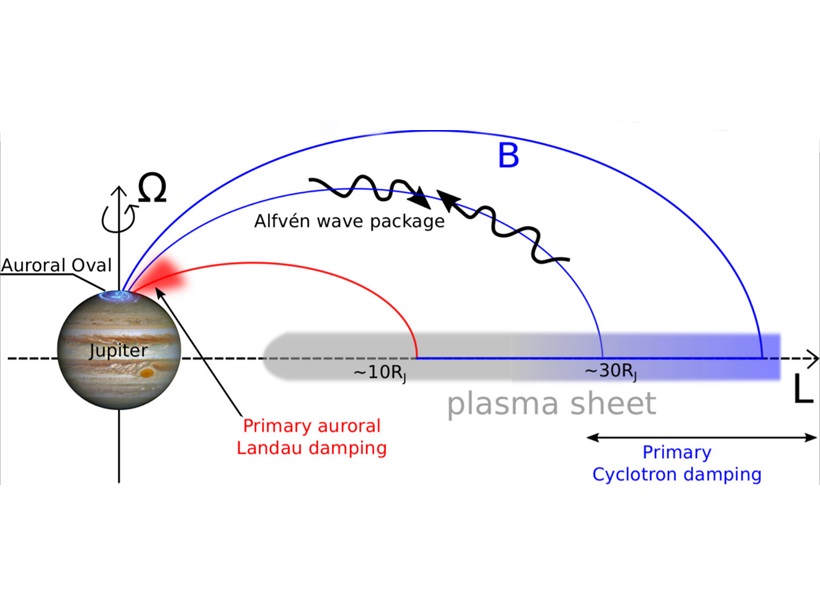Source: Journal of Geophysical Research: Space Physics
Because of the outward motion of particles coming from its moon Io, a force imbalance exists in the magnetic bubble around Jupiter. This causes undulations of the magnetic field, known as Alfvén waves, that carry energy along the magnetic field lines to relieve this stress. These waves can also interact with electrons along the way, though, accelerating them into a fast rain of particles into the planet’s upper atmosphere, causing brilliant auroral displays. Farther out in the magnetosphere, these waves interact with ions, a process that might explain the unresolved heating of the plasma sheet.
Saur et al. [2018] has the potential to become a seminal work in the field of magnetospheric physics. With wave-particle interaction physics, it not only explains the unexpected Juno findings concerning the Jovian aurora, but also extends to likely solve the long-standing problem of how magnetospheric particles are heated as they are transported away from the planet. This Jovian result is relevant for all magnetospheric systems.
Citation: Saur, J., Janser, S., Schreiner, A., Clark, G., Mauk, B. H., Kollmann P., et al. [2018]. Wave‐particle interaction of Alfvén waves in Jupiter’s magnetosphere: Auroral and magnetospheric particle acceleration. Journal of Geophysical Research: Space Physics, 123. https://doi.org/10.1029/2018JA025948
—Mike Liemohn, Editor-in-Chief, JGR: Space Physics
Text © 2019. The authors. CC BY-NC-ND 3.0
Except where otherwise noted, images are subject to copyright. Any reuse without express permission from the copyright owner is prohibited.

